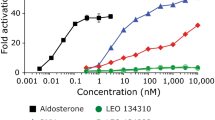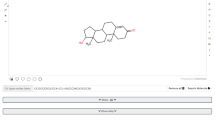Abstract
LOCAL applications of β-naphthol to the skin have been used in dermatology since its introduction by Ludwig and Kaposi in 1881. Although it has been known for many years that toxic effects have followed the application of β-naphthol to the skin of children1, there has previously been no definite evidence for the absorption of this compound through the skin.
This is a preview of subscription content, access via your institution
Access options
Subscribe to this journal
Receive 51 print issues and online access
$199.00 per year
only $3.90 per issue
Buy this article
- Purchase on SpringerLink
- Instant access to full article PDF
Prices may be subject to local taxes which are calculated during checkout
Similar content being viewed by others
References
Burger, L., Ber. Klin. Wschr., 55, 1025 (1918).
Evans, E. I., Puknell, O. J., Robinett, P. W., Batchelor, A., and Martin, M., Ann. Surg., 135, 804 (1952).
Brown, J. B., Biochem. J., 60, 185 (1955).
Fotherby, K., Biochem. J., 73, 339 (1959).
Fotherby, K., and Love, D. N., J. Endocrinol., 20, 157 (1960).
Author information
Authors and Affiliations
Rights and permissions
About this article
Cite this article
HARKNESS, R., BEVERIDGE, G. Isolation of β Naphthol from Urine after its Application to Skin. Nature 211, 413–414 (1966). https://doi.org/10.1038/211413a0
Issue date:
DOI: https://doi.org/10.1038/211413a0



